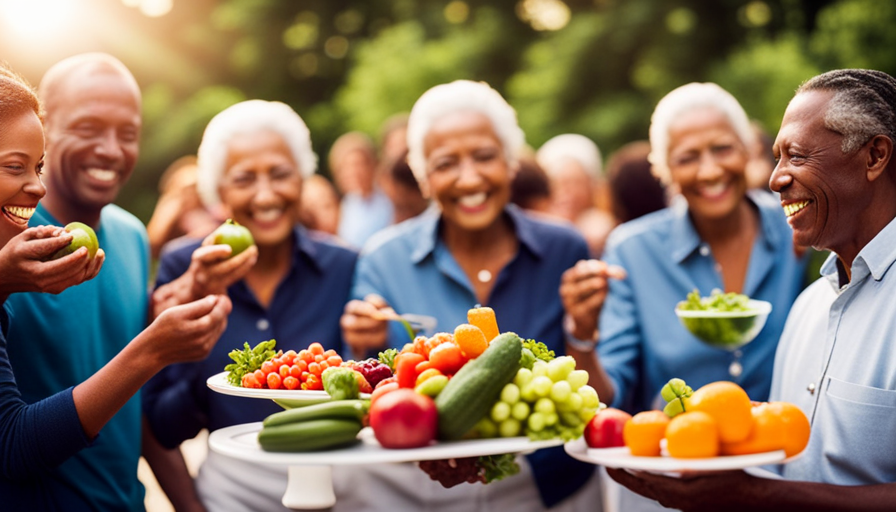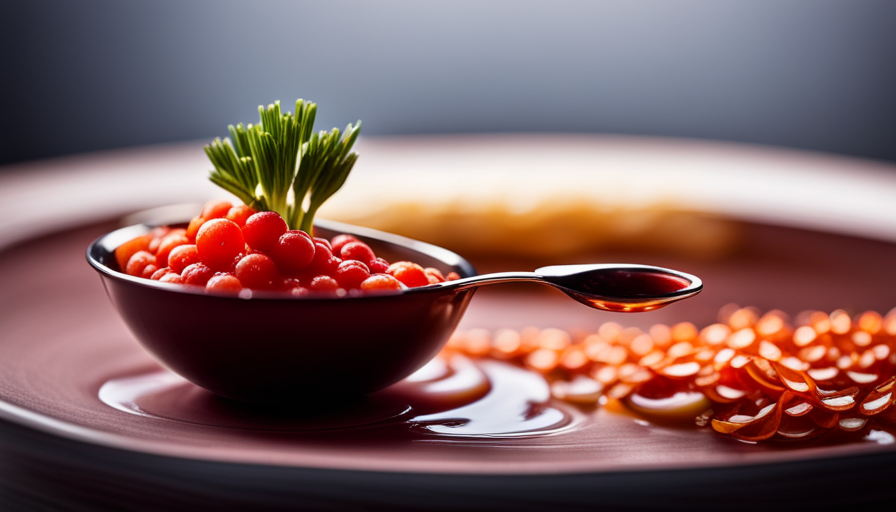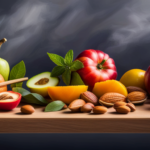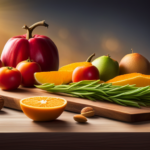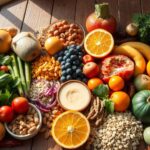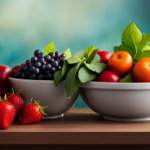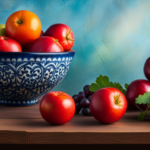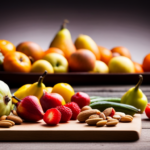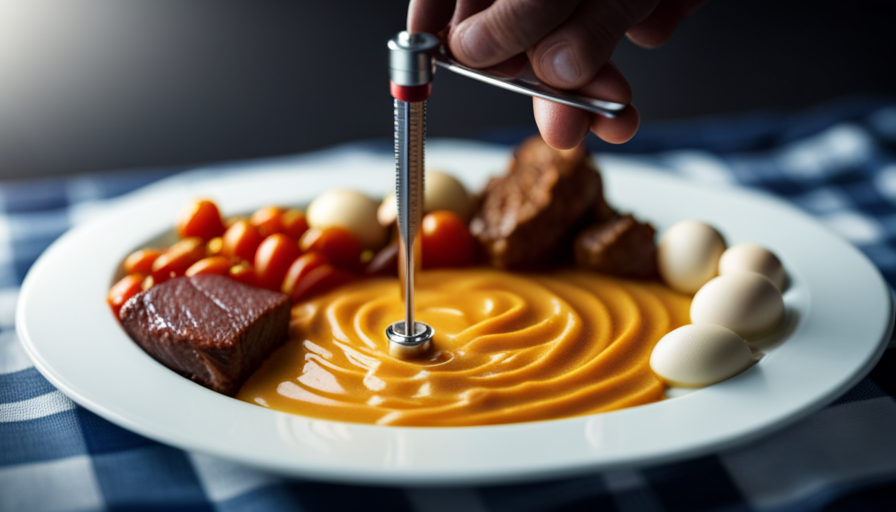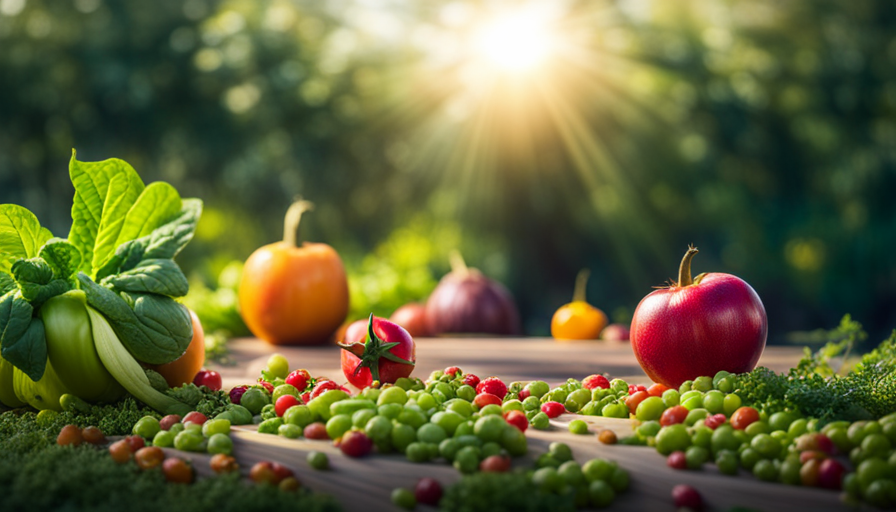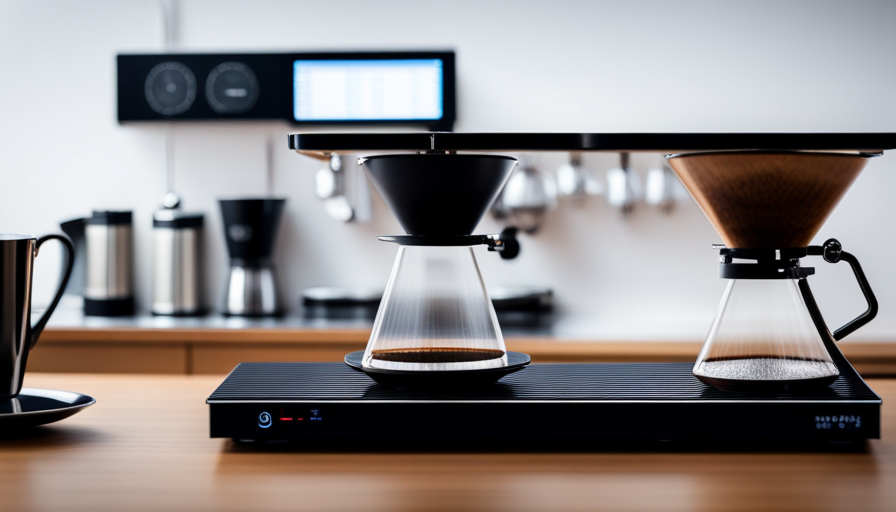Did you know that approximately 1% of people follow a diet that consists solely of raw foods? It’s true, a small but dedicated group chooses to only eat uncooked food.
A raw food diet consists of consuming uncooked and unprocessed fruits, vegetables, nuts, and seeds. While this may seem extreme to some, those who follow this lifestyle believe in the numerous health benefits it offers. By avoiding the cooking process, they believe they are preserving vital nutrients and enzymes that can be lost through heat. Additionally, proponents of the raw food diet claim it can improve digestion, increase energy levels, and promote weight loss.
However, there are also challenges and misconceptions associated with this way of eating. In this article, we will explore the reasons behind choosing a raw food lifestyle, the potential health benefits, common challenges, and tips for getting started. Whether you’re curious about this alternative way of eating or considering incorporating more raw foods into your diet, read on to learn more.
Key Takeaways
- Approximately 1% of the population follows a raw food diet.
- Raw food diets consist of uncooked and unprocessed fruits, vegetables, nuts, and seeds.
- Followers believe it preserves vital nutrients and enzymes, improves digestion, increases energy levels, and promotes weight loss.
- Careful meal planning, understanding the limitations, and consulting with a healthcare professional or dietitian are advised.
What is a Raw Food Diet?
If you’re looking to revolutionize your eating habits, a raw food diet can be a game-changing way to nourish your body with the natural goodness of uncooked fruits, vegetables, nuts, and seeds.
A raw food diet is based on the principle that cooking food can destroy vital nutrients and enzymes that are essential for our health. By consuming raw foods, you can maximize the nutritional benefits and experience increased energy levels, improved digestion, and weight loss.
One of the key aspects of a raw food diet is the abundance of raw food recipes available. From refreshing smoothies and colorful salads to delicious raw desserts, there is a wide variety of options to satisfy your taste buds. Raw food recipes often emphasize the use of fresh, organic ingredients to ensure the highest quality and nutritional value.
In addition to exploring raw food recipes, learning raw food preparation techniques is essential for success on a raw food diet. These techniques include sprouting, fermenting, dehydrating, and juicing. Sprouting involves soaking seeds, nuts, or grains in water until they sprout, enhancing their nutritional content. Fermenting allows beneficial bacteria to thrive, aiding digestion and promoting a healthy gut. Dehydrating is used to create crispy snacks, such as kale chips or flax crackers. Juicing extracts the liquid from fruits and vegetables, providing a concentrated source of vitamins and minerals.
By incorporating raw food recipes and preparation techniques into your diet, you can embark on a journey of nourishing your body with vibrant, nutrient-dense foods.
Reasons for Choosing a Raw Food Lifestyle
Living a raw food lifestyle is a powerful choice that nurtures our bodies and connects us with the vibrant energy of nature. There are several benefits to adopting a raw food diet, but it’s important to be aware of potential drawbacks as well.
Benefits of a raw food lifestyle:
-
Increased nutrient intake: Raw foods are rich in vitamins, minerals, and enzymes that can be destroyed during cooking. By consuming them in their natural state, we can maximize their nutritional value and support our overall health.
-
Improved digestion: Raw foods are easier to digest as they contain natural enzymes that aid in the breakdown of food. This can lead to reduced bloating, increased energy, and better absorption of nutrients.
-
Enhanced weight management: A raw food diet often consists of low-calorie, nutrient-dense foods like fruits, vegetables, and nuts. This can help with weight loss or maintenance, as these foods are typically lower in calories compared to processed or cooked foods.
Potential drawbacks of a raw food diet:
-
Nutritional deficiencies: While a raw food diet can be nutritionally dense, it may lack certain essential nutrients like vitamin B12, iron, and omega-3 fatty acids. It’s important to ensure a balanced intake through careful meal planning and, if necessary, supplementation.
-
Limited food choices: Following a raw food diet may restrict your food options, as cooking is not allowed. This can make it challenging to meet your nutritional needs and may require additional creativity and planning in meal preparation.
-
Food safety concerns: Raw foods carry a higher risk of foodborne illnesses, as they are not cooked at temperatures that kill harmful bacteria. It’s crucial to handle and wash raw foods properly to minimize the risk of contamination.
The raw food lifestyle has its benefits, such as increased nutrient intake, improved digestion, and enhanced weight management. However, it’s important to be mindful of potential drawbacks like nutritional deficiencies, limited food choices, and food safety concerns. Consulting with a healthcare professional or registered dietitian can provide personalized guidance and support when considering a raw food diet.
Potential Health Benefits of Eating Raw Food
One cannot deny the potential health benefits of embracing a raw food lifestyle. Many people who eat all raw food report experiencing weight loss and improved digestion.
Raw foods are generally low in calories and high in fiber, which can contribute to weight loss. Additionally, raw foods are rich in enzymes that can aid in digestion and promote a healthy gut.
When you eat raw food, you consume foods in their natural state, which means they retain their nutrients and enzymes. Cooking food can often destroy some of these essential nutrients and enzymes, making raw food a more nutrient-dense option. This can lead to improved overall health and well-being.
In terms of weight loss, raw food diets are often associated with a lower calorie intake. Fruits, vegetables, nuts, and seeds are all common staples of a raw food diet, and these foods tend to be lower in calories compared to processed and cooked foods. Additionally, the high fiber content of raw foods can help you feel fuller for longer, reducing the likelihood of overeating.
Furthermore, raw foods are easier to digest compared to cooked foods. The enzymes present in raw foods help break down the food and facilitate the absorption of nutrients. This can lead to improved digestion, reduced bloating, and increased energy levels.
Embracing a raw food lifestyle has the potential to offer several health benefits, including potential weight loss and improved digestion. However, it is important to maintain a balanced and varied diet to ensure you’re meeting all your nutritional needs.
Common Challenges and Misconceptions
Despite the potential health benefits, there are common challenges and misconceptions associated with embracing a raw food lifestyle.
One of the main challenges is the difficulty in meeting all the nutritional requirements. Raw food diets often lack certain nutrients such as vitamin B12, iron, calcium, and omega-3 fatty acids, which are commonly found in animal products. It’s important for individuals following a raw food diet to carefully plan their meals and consider supplementation to ensure they’re getting all the necessary nutrients.
Another challenge is the time and effort required in food preparation. Raw food diets typically involve a lot of chopping, blending, and soaking to make the food more digestible. This can be time-consuming and may require investing in specialized kitchen equipment. Additionally, finding a variety of fresh and high-quality produce year-round can be challenging, especially in areas with limited access to farmers’ markets or organic food stores.
Misconceptions about raw food diets also exist. One common misconception is that all raw foods are automatically healthier than cooked foods. While it’s true that cooking can destroy some nutrients, it can also enhance the bioavailability of others. For example, cooking tomatoes actually increases the availability of lycopene, a powerful antioxidant. It’s important to note that not all foods are safe to eat raw, as some can harbor harmful bacteria or toxins that are eliminated through cooking.
While there are potential health benefits to eating raw food, there are also challenges and misconceptions that need to be addressed. It’s important to carefully plan meals to meet nutritional needs, be prepared for the time and effort involved in food preparation, and understand that not all raw foods are automatically healthier than cooked ones.
Tips for Getting Started with a Raw Food Diet
Getting started with a raw food diet can be easier than you think, and incorporating just one raw meal a day has been shown to increase energy levels by 30%. If you’re interested in transitioning to a raw food diet, here are some tips to help you get started.
First, focus on incorporating more fruits and vegetables into your meals. These foods are naturally raw and provide essential nutrients and antioxidants. Aim for a variety of colors to ensure you’re getting a wide range of nutrients.
Second, experiment with raw food recipes. There are plenty of delicious and creative options available, from zucchini noodles to raw desserts. Explore different seasonings and flavorings to keep your meals interesting.
Third, be prepared with the right tools and equipment. Invest in a good blender and food processor to make smoothies, sauces, and dips. A dehydrator can also be useful for creating raw snacks like kale chips.
Lastly, don’t forget to stay hydrated. Raw foods are naturally high in water content, but it’s still important to drink plenty of fluids throughout the day.
By following these tips, you can start reaping the benefits of a raw food diet, such as increased energy levels, improved digestion, and enhanced overall well-being. So why not give it a try and see how it makes you feel?
| Pros | Cons |
|---|---|
| Increased energy levels | Initial difficulty in meal planning |
| Improved digestion | Higher cost of organic produce |
| Enhanced overall well-being | Social challenges when dining out |
Incorporating Raw Food into Your Daily Routine
To truly embrace the raw food lifestyle, it’s essential to seamlessly integrate nutrient-rich, uncooked ingredients into your everyday routine. By incorporating raw food into your daily meals, you can enjoy a wide range of health benefits while exploring new flavors and textures.
Here are some tips to help you incorporate raw food into your daily routine:
-
Start your day with a raw food breakfast: A simple and delicious way to begin your day is by enjoying a fresh fruit salad or a green smoothie packed with leafy greens, fruits, and nuts.
-
Experiment with raw food snacks: Replace processed snacks with raw food options such as carrot sticks with hummus, kale chips, or raw energy balls made from dates and nuts.
-
Incorporate raw food into family meals: Get your family involved by adding raw food elements to your meals. For example, you can top your cooked dishes with a raw salsa made from diced tomatoes, onions, and cilantro.
-
Try raw food desserts: Satisfy your sweet tooth with raw food desserts like raw chocolate avocado mousse or raw fruit tarts made with a nut and date crust.
By incorporating these raw food ideas into your daily routine, you can gradually transition to a more raw food-focused lifestyle while still enjoying delicious and nutritious meals with your family.
Raw Food Recipes and Meal Ideas
Get ready to tantalize your taste buds with these delicious and creative raw food recipes and meal ideas that will leave you feeling energized and satisfied! Incorporating raw food into your daily routine can be exciting and rewarding, and there are plenty of raw food preparation techniques to explore. Whether you’re new to raw food or a seasoned pro, these recipes will inspire you to try new flavors and textures.
To make it easier for you to plan your raw food meals, here’s a table with five ideas to get you started:
| Meal Idea | Ingredients |
|---|---|
| Zucchini Noodles | Spiralized zucchini, cherry tomatoes, basil |
| Raw Pad Thai | Shredded carrots, bell peppers, almond butter |
| Raw Pizza | Raw pizza crust, tomato sauce, veggies, cashew cheese |
| Green Smoothie | Spinach, kale, pineapple, banana, coconut water |
| Raw Chocolate Cake | Dates, almonds, cacao powder, coconut oil |
In addition to these savory options, don’t forget about raw food desserts! Indulge your sweet tooth with raw chocolate mousse, fruit sorbets, or raw cheesecake made with cashews and dates.
Remember, the key to successful raw food preparation is using fresh, organic ingredients and investing in a good blender or food processor. So get creative in the kitchen and enjoy the benefits of a raw food lifestyle!
Balancing Nutritional Needs on a Raw Food Diet
Are you wondering how to balance your nutritional needs while following a raw food diet? Eating a raw food diet can provide numerous health benefits, but it’s important to ensure that you’re meeting all of your nutritional requirements.
Here are some tips to help you plan your raw food meals and meet your nutritional needs:
-
Include a variety of fruits and vegetables in your diet: Fruits and vegetables are rich in vitamins, minerals, and antioxidants that are essential for good health. Aim to include a wide range of colors in your meals to ensure a diverse nutrient intake.
-
Incorporate sources of plant-based protein: While a raw food diet is typically low in protein, it’s still important to include sources of plant-based protein such as nuts, seeds, and legumes. These foods can help ensure that you’re getting an adequate amount of this essential nutrient.
-
Don’t forget about healthy fats: Healthy fats are an important part of a balanced diet. Include sources of healthy fats such as avocados, nuts, and seeds in your meals to provide energy and support nutrient absorption.
-
Consider supplementing with vitamin B12: Vitamin B12 is primarily found in animal products, so it can be challenging to get enough of this nutrient on a raw food diet. Consider discussing with a healthcare professional whether you should supplement with vitamin B12 to ensure you’re meeting your needs.
By following these tips and incorporating a wide variety of raw fruits, vegetables, plant-based proteins, and healthy fats into your diet, you can successfully balance your nutritional needs while following a raw food diet.
Raw Food and Sustainability: Environmental Considerations
Raw food diets have a positive impact on the environment due to their sustainable and eco-friendly nature. When you choose to eat all raw food, you are not only making a healthy choice for yourself, but also for the planet. The environmental impact of raw food diets is significant, as they promote sustainable farming practices and reduce the carbon footprint associated with food production.
One of the key reasons why raw food diets are environmentally friendly is because they encourage the consumption of locally sourced, organic produce. By eating raw fruits, vegetables, nuts, and seeds, you are supporting sustainable farming methods that minimize the use of harmful chemicals and pesticides. This helps to protect the soil, water, and air from pollution, preserving the delicate ecosystems that support life on Earth.
To further illustrate the environmental benefits of raw food diets, consider the following table:
| Environmental Impact | Sustainable Farming |
|---|---|
| Reduces greenhouse gas emissions | Supports organic farming |
| Minimizes water usage | Protects biodiversity |
| Prevents deforestation | Promotes soil health |
As you can see, raw food diets have a positive impact on the environment by reducing greenhouse gas emissions, conserving water resources, and preventing deforestation. By choosing to eat all raw food, you are making a sustainable choice that supports the health of our planet.
Exploring the Raw Food Community and Resources
Join the vibrant and supportive community of raw food enthusiasts, where you’ll discover a wealth of resources to nourish your body and inspire your culinary creativity. Exploring raw food communities opens up a world of possibilities. Here are some reasons why you should dive right in:
-
Connect with like-minded individuals who share your passion for raw food. By joining a raw food community, you’ll find a supportive network of individuals who can offer advice, share recipes, and provide encouragement on your raw food journey.
-
Access a plethora of raw food resources. Raw food communities often have online forums, blogs, and social media groups where members can exchange ideas, recipes, and tips. These resources can help you expand your knowledge about raw food and discover new ways to incorporate it into your diet.
-
Gain inspiration for your culinary creations. Raw food communities are a treasure trove of creative recipes and innovative techniques. By engaging with the community, you’ll be exposed to a variety of flavors, textures, and combinations that’ll keep your taste buds excited and your meals interesting.
-
Receive emotional and moral support. Changing your diet can be challenging, but being part of a raw food community means you don’t have to go through it alone. You’ll find a group of people who understand your journey and can provide the support and motivation you need to stay on track.
So, don’t hesitate to explore raw food communities and tap into the vast resources and support they offer. Your raw food adventure awaits!
Frequently Asked Questions
Can I still eat meat and dairy on a raw food diet?
Yes, you can still eat meat and dairy on a raw food diet, but there are alternatives available. Many people on a raw food diet choose to consume raw meat as tartare or carpaccio. For dairy, raw milk and cheese from unpasteurized milk are options. However, it’s important to note that consuming raw animal products carries a risk of foodborne illnesses. If you prefer to avoid raw animal products, there are plenty of delicious meat alternatives and raw food recipes available that can provide the nutrients you need.
Is it safe to eat raw eggs on a raw food diet?
It’s generally not recommended to eat raw eggs due to the risk of salmonella contamination. Cooking eggs kills bacteria and reduces the risk of foodborne illness. However, if you choose to consume raw eggs, ensure they’re fresh, clean, and from a trusted source. Raw eggs can provide nutritional benefits like protein, vitamins, and minerals. But remember, the safety of eating raw eggs should be carefully considered to avoid potential health risks.
How do I ensure I’m getting enough protein on a raw food diet?
To ensure you’re getting enough protein on a raw food diet, it’s important to incorporate nutrient-rich sources into your meals. Think of protein as the building blocks of your body, like bricks that construct a sturdy house. Include foods like nuts, seeds, sprouted grains, and legumes in your diet, as they’re great sources of raw protein.
By ensuring nutrient balance and incorporating these raw food protein sources, you can meet your protein needs while enjoying the benefits of a raw food diet.
Can I eat cooked food occasionally while following a raw food diet?
Yes, you can occasionally eat cooked food while following a raw food diet. It’s important to listen to your body and make choices that work for you. While the benefits of a raw food diet include increased nutrient intake and improved digestion, incorporating cooked food alternatives can provide variety and convenience. Steam vegetables or cook grains to add warmth and texture to your meals. Remember, balance is key in maintaining a healthy and sustainable eating plan.
Are there any potential risks or side effects of a raw food diet?
While a raw food diet can have its benefits, it’s important to be aware of potential risks and side effects.
One rhetorical device that can be used here is a simile: ‘Embarking on a raw food diet is like stepping into uncharted territory.’ This evokes a sense of uncertainty and caution.
Such a diet may lead to potential nutrient deficiencies, as certain vitamins and minerals are better absorbed through cooking.
Additionally, the impact on digestion and gut health can vary from person to person.
It’s crucial to consult a healthcare professional before making any drastic dietary changes.
Is It Safe to Eat All Raw Food, Including Minecraft Foods?
While some raw food options in Minecraft can be consumed without issue, it’s generally not safe to eat all raw food, including Minecraft foods, in real life. Consuming raw meats and certain vegetables can pose health risks due to bacteria and parasites. It’s best to cook food before consuming it.
Conclusion
In conclusion, embracing a raw food diet is like embarking on a journey through a lush and vibrant forest. As you navigate through the abundance of fruits, vegetables, and nuts, you discover a world of nourishment and vitality.
By choosing to eat raw, you unlock the secret to optimal health and well-being, while also contributing to a more sustainable planet.
Remember, just as the forest thrives when all its elements are in harmony, so too can you thrive when you embrace the raw food lifestyle. So step into this bountiful forest, and let nature guide you towards a healthier and more vibrant life.

